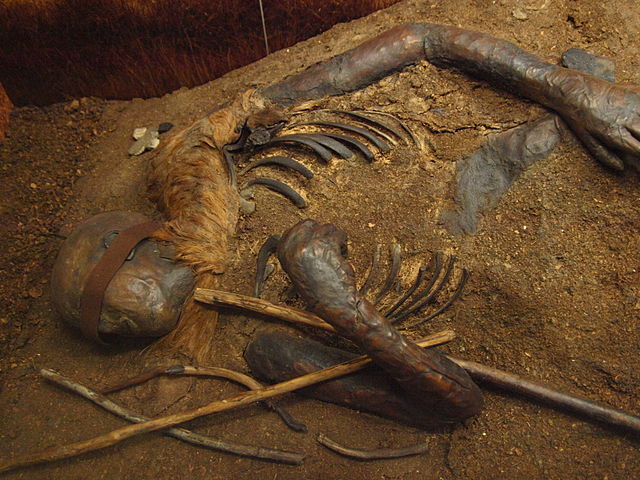The Grauballe Man is a bog body that was uncovered in 1952 from a peat bog near the village of Grauballe in Jutland, Denmark. The body is that of a man dating from the late 3rd century BC, during the early Germanic Iron Age. Based on the evidence of his wounds, he was most likely killed by having his throat slit. His corpse was then deposited in the bog, where his body was naturally preserved for over two millennia. His was not the only bog body to be found in the peat bogs of Jutland. Together with other notable examples, Tollund Man and the Elling Woman, Grauballe Man represents an established tradition at the time. It is commonly thought that these killings, including that of Grauballe Man, were examples of human sacrifice, possibly an important rite in Iron Age Germanic paganism.
The face of the Grauballe Man
On display at Moesgaard Museum
The body of the Grauballe Man upon his discovery.
The well preserved hand of Grauballe Man
A bog body is a human cadaver that has been naturally mummified in a peat bog. Such bodies, sometimes known as bog people, are both geographically and chronologically widespread, having been dated to between 8000 BCE and the Second World War. The unifying factor of the bog bodies is that they have been found in peat and are partially preserved; however, the actual levels of preservation vary widely from perfectly preserved to mere skeletons.
Tollund Man, Denmark, 4th c. BCE
Gallagh Man, Ireland, c. 470–120 BCE
Discoveries such as Röst Girl no longer exist, having been destroyed during the Second World War (photo date: 1926).
Windeby I, the body of a teenage boy, found in Schleswig, Germany








